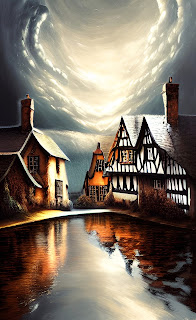Introduction
Renaissance (14th-17th centuries)
Enlightenment (17th-18th centuries)
This was a period of intellectual and philosophical inquiry, marked by a belief in reason and science as the means to understand the world. Enlightenment literature often explores ideas of progress, liberty, and human rights. The Enlightenment , in fact, was a cultural movement that emerged in Europe in the 17th and 18th centuries. Usually it covers Late Renaissance and 17th Century , the restoration period and the 18th century, Age of Dryden , Age of Pope and Age of Johnson.
It was characterized by a focus on reason, science, and individualism, and a rejection of traditional authority and religious dogma. Enlightenment thinkers believed that reason and knowledge could lead to human progress and social reform.
Romanticism (late 18th-early 19th centuries)
Realism (mid-19th century)
This movement emphasized the depiction of ordinary, everyday life and characters. Realist literature often focuses on the harsh realities of life, including poverty, social inequality, and the struggles of working-class people.
Naturalism (late 19th century)
This movement was an extension of realism, but with a more pessimistic and deterministic view of human nature. Naturalist literature often explores the idea that individuals are shaped by their environment and circumstances. It developed in the late 19th century and was characterized by a scientific approach to literature. Naturalist writers believed that human behavior was determined by social, economic, and environmental factors beyond individual control. They depicted characters as helpless victims of their circumstances, emphasizing the harsh realities of poverty, violence, and disease. Famous naturalist authors include Emile Zola, Stephen Crane, and Theodore Dreiser.
Modernism (early 20th century)
This was a movement that rejected traditional forms of literature and experimented with new styles, such as stream-of-consciousness narration and fragmentation of time and space. Modernist literature often reflects the disillusionment and uncertainty of the post-World War I era. Modernism was a literary movement that emerged in the early 20th century as a response to the traditional values and forms of the past. Modernist writers experimented with new literary techniques and forms, such as stream-of-consciousness narration and non-linear plot structures. They often portrayed characters who were fragmented or alienated from society, reflecting the uncertainties and anxieties of the modern world. Famous modernist authors include James Joyce, Virginia Woolf, T.S. Eliot, and Franz Kafka.
Postmodernism (mid-20th century)
Postmodernism challenges the notion of a single, objective reality and emphasizes the subjective nature of experience. Postmodern literature often plays with language, narrative, and structure in order to subvert traditional literary conventions. Postmodernism was a literary movement that emerged in the mid-20th century and challenged the traditional ideas and conventions of modernism. Postmodernist writers rejected the notion of objective truth and instead emphasized subjectivity, irony, and self-reflexivity. They often incorporated elements of popular culture and non-literary texts into their work. Famous postmodernist authors include Thomas Pynchon, Salman Rushdie, Margaret Atwood, and Don DeLillo. The movement had a significant influence on various art forms, including literature, architecture, and visual arts.
Conclusion
These are just a few of the major literary movements and their characteristics. Of course, there are many more, and there are many writers and works that defy categorization or are influenced by multiple movements.
References
1. English literature - Wikipedia. (2016, March 1). English Literature - Wikipedia. https://en.wikipedia.org/wiki/English_literature
2. Alexander, M. (2000, November 21). A History of English Literature. https://doi.org/10.1604/9780333672266
3. ALBERT. (2000). History of English Literature (Fifth Edition) [English]. OXFORD UNIVERSITY PRESS.


Comments
Post a Comment
Drop any query, suggestion or comment here.